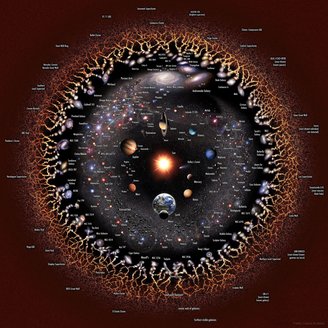mistakes in science They are often open doors to new discoveries. Every process failure, thinking error, or unexpected experimental setup can reveal paths that would not otherwise be discovered.
Every scientist makes mistakes, even those considered the greatest geniuses. Among them is Albert Einstein, whose brilliant mind completely revolutionized our understanding of the Universe in the 20th century.
Interestingly, it was precisely one of his “mistakes” that became the starting point for one of the most intriguing questions in modern cosmology. This is the story of the cosmological constant, considered by Einstein himself “the biggest mistake of his life” and eventually becoming an early clue to the nature of one of the greatest cosmic mysteries: dark energy.
In 1915, Albert Einstein first presented to the world the Theory of General Relativity (TRG), a new definition of gravity understood as the curvature of space rather than considered as a force between two objects. time resulting from the presence of mass and energy. This theory made it possible to accurately explain phenomena that Newtonian gravity could not explain, such as the precession of the orbit of the planet Mercury.
However, when Einstein tried to apply his theory to the entire Universe, he encountered a problem.
At that time, most scientists believed that the Universe was static and eternal, meaning that it had no beginning or end, no expansion or contraction. However, the TRG equations suggested that the Universe should not remain static but expand or contract. This caused a dilemma for Einstein; because the equations of his theory contradicted the widespread belief that the universe did not change..

To solve this problem, Einstein added a new term to his equations: the cosmological constant (denoted ?). This term served as a type of “anti-gravity force” that balanced the gravitational attraction of matter and ensured that the Universe remained static. The cosmological constant represented a form of energy specific to space; It was “pushing” space outward, counteracting the “pull” caused by gravity..
Mathematically, the cosmological constant added negative pressure to the model of the Universe, adjusting the equations so that the Universe was static. Although this artificial adjustment seemed to solve the problem at the time, it raised the question: Was the cosmological constant just a ruse to save Einstein’s theory?
In the late 1920s, in 1929, American astronomer Edwin Hubble and Belgian priest and astronomer Georges Lemaître independently made a discovery that shook up the view of the static Universe: They showed that galaxies were moving away from each other. In fact, the universe was expanding.

At that moment Einstein said, When he learned of the discovery that the Cosmos was expanding, he said that introducing the cosmological constant was the biggest mistake of his life.Because if he had accepted the consequences of his own theory, he could have predicted that the universe would expand before experimental verification.
Once it was proven that the universe was expanding, the cosmological constant was no longer useful. Cosmological models can be simplified by accepting and excluding that the Universe began expanding from a starting point, the Big Bang. For most of the 20th century, the cosmological constant was considered a historical curiosity; an example of how even great geniuses can get it wrong.

However, at the end of the 20th century, history took another surprising turn. In 1998, observations of distant supernovae by two independent groups of astronomers showed that the Universe was not only expanding, but also expanding. But this expansion was accelerating, that is, it was getting faster as time went by..
To explain the acceleration of cosmic expansion, scientists have reintroduced the idea of a form of energy filling space and causing this accelerated expansion. This form of energy became known as “dark energy” and, interestingly, could be modeled by reintroducing the cosmological constant into Einstein’s theory.
Thus Einstein’s “error” resulted in the emergence of a clue to one of the greatest mysteries of modern physics. This story reminds us that science is an ongoing process of discovery and reinterpretation. What is considered a mistake today may turn out to be a solution, or at least a window to new understandings, over time..
Source: Tec Mundo
I’m Blaine Morgan, an experienced journalist and writer with over 8 years of experience in the tech industry. My expertise lies in writing about technology news and trends, covering everything from cutting-edge gadgets to emerging software developments. I’ve written for several leading publications including Gadget Onus where I am an author.













